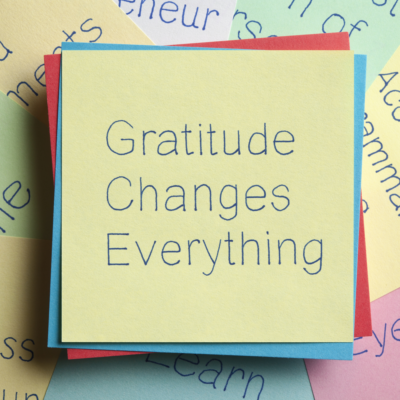In the latest episode of the TeamBuilding Saves the World podcast, Rob Fletcher, founder of Quixote Consulting, takes a look at the concept of “resiliency,” and why it matters. Fletcher is an award-winning author, speaker, and consultant that specializes in building passionate and committed teams.
What is Resilience?
Fletcher defines resilience as taking something challenging, and then bouncing back from it stronger — or, as he puts it, “bouncing forward.” Building personal resilience at work can lead to employees that better manage their stress, have a better work-life balance, and are more productive — making resilience in the workplace something every employer should strive to promote.
Fletcher notes that thinking of it as bouncing forward is an attitude of looking ahead, and finding a new way to thrive, even as new challenges emerge. This is more important than ever before as COVID-19 has brought an onslaught of new challenges and uncertainty that can sometimes seem to shift daily — even a year and a half into the pandemic. That said, every employee, in every position, can learn how to build resilience that will serve them well through the end of the current crisis and into whatever the future might bring.
7 Ways to Build Resilience in the Workplace
It can be hard to step away from the daily grind and truly understand how it is impacting you, but these self-care tips will help build a more resilient, more productive, and ultimately happier team. There is no downside to encouraging your employees to take time to improve their own outlook, as it will lead to far better workers in the long run. Here are seven ways to build resilience in the workplace.
1. Get enough sleep.
Sure, it is easy to say “well, just go to bed earlier,” but the reality is that both the time spent asleep and the quality of sleep has a direct impact on everything from mood to concentration, to the ability to handle the unexpected.
To reach that nirvana of “enough” sleep, try these things:
- Turn off the screens at least an hour before bed. That means putting down the phone and turning off the TV.
- If you HAVE to use a screen, use a “blue light” filter. These filters shift the screen to a more yellow appearance, as blue light is what signals the brain that it is morning and it is time to wake up and start the day. “Blue light is basically signaling your brain ‘wake up, wake up, wake up’,” said Fletcher. “If you’re watching a screen and feeling tired, your brain is still getting that message.”
- Use a white noise machine. Sometimes it can be hard to calm the brain down enough to sleep. White noise gives you something to drown out the rushing thoughts but is neutral enough not to keep you awake.
- Make your sleeping environment cool, dark, and quiet. Going back to biology, most of us need that kind of environment to signal the brain that it’s time to sleep.
- Create — and stick to — a sleep schedule. You might think bedtimes are for children, but the reality is that humans are creatures of habit. If you establish that you go to bed at 10 pm every single night, eventually your brain will just start to feel sleepy at that time of day as it anticipates hitting your pillow. Creating a routine is a great way to slowly reprogram your brain about what times you’re awake, and what times it is supposed to be sleeping.
2. Create time gaps.
Before COVID-19 led most people to work from home, we all had commutes that started and ended the day. You probably had a morning routine to wake up and get ready to be productive, and an end-of-day routine to leave the work behind and get ready for family time at home. But working from home, you go directly from work to home and back — so build those gaps back in.
“Look at the gaps,” Fletcher said, “what’s your commute? What’s the gap you can put between your home and work? Could you go for a short walk in the morning? Or do something enjoyable for yourself at the end of the day?”
Gaps can also include lunch breaks, which, without the environmental clues to signal it’s time to take a break in the middle of the day, you probably are more likely to just work through it. These gaps (even short ones) can help establish a far more defined line between work and home, even when working from a home office, which in turn can lead to far more productive hours.
3. Get up and move.
“Moving is so key for resiliency, and so key for the brain,” stressed Fletcher. Even if it’s just moving a bit more, taking the time to have short breaks to stand up and walk around can make a world of difference in how resilient you are in the workplace.
Use a reminder on your phone, an email invite on the calendar or some other technique to schedule in these short movement breaks throughout the day so they don’t get forgotten — even if the break is just standing up and taking a few steps around the room before sitting back down and getting back to work.
4. Have a set work schedule.
When working from home, it can be easy to lose track of start and stop times, and hard to just “shut it off” at the end of the day — but that’s exactly what you should be doing. Having set “office hours” when you are working and when you stop can help the brain better transition between work and home life, and ultimately lead to less stress. One trick to try if you find this difficult is to set an alarm 10-20 minutes before the end of the day to give you time to wrap up what you’re working on and start winding down. Then, when the stop time comes, you can just get up and walk away.
This also means that if you use a work phone, or you have work emails or calls sent to your phone, that you either leave it in the office, or you set those accounts to “quiet hours”. This way work alerts don’t disturb you when you aren’t working, and don’t present a temptation to just keep working from a different location.
5. Go outside.
There is “something about the light that calms us down, even when it’s a cloudy day,” said Fletcher. Just walking outside can help brighten a mood, and give you a bit of Vitamin D, which promotes relaxation. There is a reason in the winter you hear about people complaining of S.A.D — Seasonal Affective Disorder — which is a type of depression that happens when the days get shorter and more overcast, liming the amount of sunshine and fresh air people can experience. It might not seem like a lot, but just getting a bit of sunlight every day can make a huge difference in your resilience in the workplace.
But what if you don’t have a way to get outside during the workday, or it’s cold, raining, overcast, etc.? Having windows where you get lots of natural light throughout the day is one way to get light, even when you can’t step outside. But even having a screensaver of a beautiful outdoor place can help, believe it or not. And if you really struggle, consider getting a daylight lamp that simulates the same wavelengths of light you get from the sun, helping to stimulate many of the same mood-lifting properties.
6. Put the screen away.
It’s not just right before bedtime that you should give yourself a break from screen time. Give your eyes a chance to rest throughout the day if you can, such as taking lunch breaks away from the computer instead of at the desk. Any opportunity you get to step away from the screen for a moment, you should take it.
7. Set boundaries — and respect them in others.
Finally, set boundaries for yourself, and then stick to them — and respect your co-workers and employees’ boundaries as well. You can follow through with every other tip on this list, but if your boss is sending you emails after hours and expecting you to respond, then it falls by the wayside. Or if you are working in different time zones and getting or sending emails to people on teams in other parts of the world — you, or they, might just be sitting down to dinner when that email comes through. Instead, said Fletcher, “send it the next morning. Write it and save it.”
Knowing your limits can help set healthy boundaries around work, which in turn allows you to be far more resilient at work when it counts. You have the mental and physical capacity to pivot, problem-solve, or just deal with the unexpected. Which in turn, makes you happier and healthier in every part of your life.
To hear the full podcast, as well as a more in-depth discussion about each of these tips and how to put them into practice, listen to the latest episode of TeamBuilding Saves the World.













